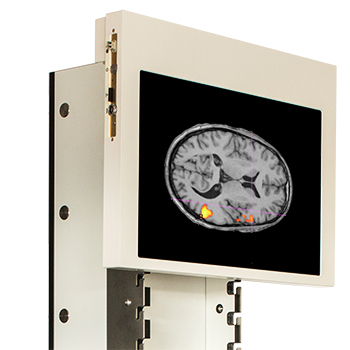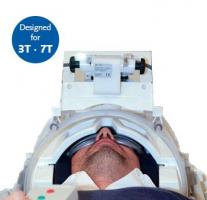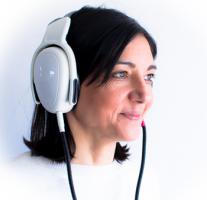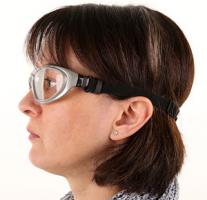MRI Displays / BOLDscreen 24 LCD for fMRI
BOLDscreen 24 LCD for fMRI

Questions about the BOLDscreen 24?
BOLDscreen 24 has been engineered from the ground up to provide the superior image quality necessary for vision research: super high brightness, high contrast, high resolution visual stimuli.
Our BOLDscreen monitors are the only "MRI Compatible" MR Safe displays with no time lag, integrated sensor for luminance calibration and, of course, no interference with the scanner, even when positioned right at the exit of the bore.
"BOLDscreen provides an absolutely fabulous image and our testing shows no artefacts whatsoever." - The NeuroImaging Center, Rijksuniversiteit Groningen.
The secrets of BOLDscreen 24...
As a scientist, you need to know the advantages and limitations of the technology you use, and understand which features really affect the quality of your stimulus. There are no secrets to Cambridge Research Systems' products - just good engineering, which we are happy to explain. If you don't find the answers you're looking for here, please drop us an email.
My experiment requires accurate stimulus timing.
Can I rely on BOLDscreen to present my images synchronous with the display driver in the source PC?
Yes - all our BOLDscreen monitors offer uniquely accurate timing.
Most MR Safe monitors were originally designed for TV or PC use, and will lag behind the input signal by many frames, in an uncontrolled way. But timing can be crucial in scientific applications. BOLDscreen is designed to deliver your video signal directly to the screen. There is a very small fixed delay equal to just one horizontal line (~100 microseconds).
Why not use a bigger display?
The 24” display of the BOLDscreen provides maximum field of view for a 60cm bore. It is designed to be placed in close proximity to the viewer right at the exit of the bore of the scanner. This keeps the viewing distance is as short as possible - about 1m. Since viewing distance dramatically affects the field of view, BOLDscreen can achieve a larger field of view than bigger monitors with longer viewing distance. If you have a 70cm bore, consider the larger BOLDscreen 32 design.
Why not use a display with higher pixel resolution?
The BOLDscreen's high resolution display provides a pixel density of 94 pixels per inch. This is enough to make the each pixel indistinguishable - even at the closest possible viewing distance of 1m. (Where it translates into an angular resolution of 65 pixels per degree or more than one per arc minute.) More resolution is pointless as it's beyond the limit of typical visual acuity.
How does BOLDscreen's fixed resolution ensure that what you put in is what you get out?
BOLDscreen operates at a fixed resolution of 1920 x 1200 @ 60Hz.
Scaling and resampling by the stimulus monitor is highly undesireable, as it changes your stimulus and timing in uncontrolled ways. BOLDscreen is purposefully designed with no image processing circuitry, so that unlike other monitors, you can be sure that what you put in is what you get out. If you need to scale you image, we recommend using your computer's graphics card.
How does BOLDscreen's contrast ratio compare with other displays?
Some manufacturers quote high contrast figures which compare white versus black with the screen switched off. We don't think that's a useful measurement, as the screen is not switched off when you're presenting stimuli! We measure the contrast between the emitted light though the panel with the pixels set to white versus set to black with the same backlight intensity – what you see in actual use. Measured in this way, BOLDscreen has a typical contrast ratio of 1000:1, similar to most high quality IPS LCD displays.
Why is built-in calibration an essential feature?
The output of an LCD display varies greatly over time – typically luminance will change by up to 20% in the first hour and a half after turning the screen on. BOLDscreen offers real time luminance calibration ensuring a stable, calibrated display immediately from switch-on, and maintaining the same level of output even when BOLDscreen has been running for hours.
Is BOLDscreen really 800cd.m-2?
Yes! To achieve the image quality required for scientific visual stimulation, we illuminate the panel with our own unique, super bright, LED matrix backlight. This produces highly saturated chromatic displays at up to 800cd.m-2: many times brighter than any normal display.
What about spatial uniformity?
The backlight has excellent spatial uniformity, typically 2% over central 75% of display area. Commercial backlights are not usually designed with uniformity in mind, meaning luminance can vary greatly from one area of the screen to another.
Why have we used an IPS (In-Plane Switching) LCD Panel?
We selected this technology to deliver the best possible response time, viewing angle and colour reproduction. If you'd like to see the full specification of the LCD we chose for BOLDscreen, we can provide you with a copy of the manufacturer's data sheet.
Can I change any settings like brightness or any configurations on BOLDscreen itself?
Yes. We designed BOLDscreen without physical buttons, as they can cause electromagnetic interference, and are susceptible to accidental changes! Instead, all settings are easily configured on a removable SD card.
If my subjects view BOLDscreen via a headcoil mounted mirror, how will “mirror-mode” make things easier?
The mirror mode feature allows you to automatically left/right flip your image when your subject is viewing the display via a single mirror, without the requirement to manually adjust your stimuli.
What fibre optic cables are included when purchasing a BOLDscreen?
We provide a 20m single link DVI fibre optic cable with each BOLDscreen display. This is passed through the waveguide into the control room and connected to your host computer DVI output.
Can BOLDscreen really be placed right next to my scanner without causing interference?
We are the only manufacturer and vendor that provides a MR Safe LCD monitor that you can site anywhere inside the MRI room, even directly at the exit of the rear of the magnet bore so that you can maximise the visual field of view.
BOLDscreen has no observed effect on functional and structural MRI scans at 3T, even when located at directly at the exit of scanner bore, and no effect on displayed image whilst scanning. See our test data.
How can an electronic device like a monitor be MR Safe?
BOLDscreen is constructed mostly from aluminium, 316 stainless steel, glass and plastic. These materials are non-magnetic. There is a very small amount of ferro-magnetic content due mainly to nickel plating on some miniature electronic components, and some tiny ferrite components. This content is of the order of a few grammes in a total monitor mass of about 16.5kg. The BOLDscreen electronics have been designed to work in the high magnetic field (it is not just a normal LCD monitor in a screened box). There is therefore no electrical hazard from operating BOLDscreen in the magnetic field of any field strength. The display is MR Safe, and the power supply and cables are MR Conditional, as defined by ASTM F2503-08.
I'm still not sure - can I try out BOLDscreen for 30 days before I decide?
We want all of our customers to be very happy with the equipment we supply. Please contact us to discuss your requirements, and we will help you to assess whether BOLDscreen is the best solution for your research.
If you're still not sure, ask us for a 30 day trial: you place an order for BOLDscreen in the normal way, then you have 30 days to try it out with your scanner, with the option to cancel if you decide that it's unsuitable in any way.


